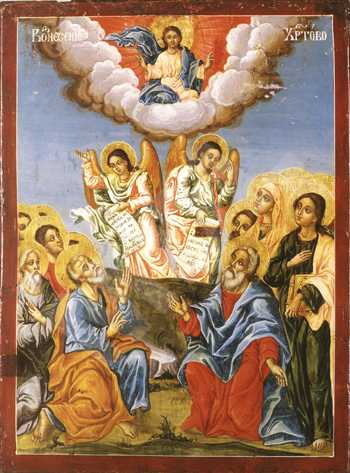The Ascension of Christ
Type:
Icon
Period:
The beginning of the
19 century
Toma Vishanov-Molera, born around 1750, painter of icons and murals, founder of the Bansko school of art. He grew up in the family of the clergyman Vishan. Around 1765 he went to Vienna, where he studied painting. It is not known who were his teachers there or when he returned to Bansko. His fellow villagers called him the Moler, Molera(from German Maler ‘painter’), whence the entire family's surname. Under the influence of the European 18th century art Toma Vishanov painted his works in a new manner, unknown until then in Orthodox art. The figures are realistic, vivid, expressive. Toma Vishanov is an innovator in the early period of Bulgarian Renaissance. His ideas on art were not understood and at first were rejected by his contemporaries. His work has not been studied extensively. He died after 1811 in Bansko.
Dimmensions (cm):
29
/ 22.5
/ 2.5
Location
Country: Bulgaria
Province: Blagoevgrad
Town: Bansko
Church: St. Trinity
Source
Country: Bulgaria
Province: Blagoevgrad
Town: Bansko
Church: St. Trinity
Description
The treatment of the theme is the traditional one. Painted on three levels are the figures, taking part in the event. Painted clearly in the lower row are the Holy Mother of God and the disciples St. John the Theologian, St. Peter, St. Paul, St. Andrew, St. Tomas et al. Painted in the central row are two angels, holding rolls in their hands and pointing at Christ. In the upper row is the figure of Christ, seated on fluffy white clouds and blessing, flooded with a radiance.
Iconographical technique: Tempera
A distemper painting. The varnish cover is applied thinly and evenly.
Base material: Wood
The icon's base is a one-piece softwood panel. The ground is of plaster, laid in a thin layer.
State, restoration traces and comments
No prior restoration has been detected.


